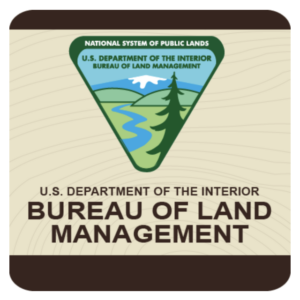Regulatory overreach by federal agencies has become a common theme recently, from the Securities and Exchange Commission’s proposed climate disclosure rule to the recently proposed “Strengthening the Stewardship of America’s Public Lands” rule by the Bureau of Land Management. And now, it looks like there is no end in sight to this unprecedented overreach.
The proposed rule is intended to escalate public land “conservation” to a “use” within the Federal Land Planning and Management Act and “facilitate restoration work on public lands in cooperation with community partners.”
However, the actual meaning of this statement has a plethora of interpretations. What is the definition of “restoration”? And what does it mean for our nation’s federal lands that are used to provide energy for American consumers?
The Bureau of Land Management has attempted to convince the nation that this rule would still allow for federal activity and production, but the proposed rule is accompanied by a whole host of implications that would severely affect Americans. Our concerns lie around the limit that the rule could place on producing energy supplies. This would raise energy prices and household costs for those on fixed incomes and already struggling with gas prices and utility bills. In short, less energy supply combined with increased demand will result in higher energy prices.
On top of the economic strain that the rule would impose on our population’s most vulnerable, the rule in and of itself deserves further scrutiny and deeper evaluation of why it is being introduced in the first place. At a time when global tensions are high with the continuation of the Russian war on Ukraine, the spotlight on the condition of the world’s oil and gas markets has become more apparent. Energy Information Administration data has repeatedly demonstrated that the United States has what it takes to increase its energy security while providing an energy supply to allies.
This rule would ultimately jeopardize the progress of the United States in strengthening our energy security, and it would diminish our ability to produce essential energy.
Today, 4 percent of federal lands are leased for natural gas and oil development. The Bureau of Land Management needs to understand that policies such as the National Historic Preservation Act already facilitate the preservation of critical areas — spots that the proposed rule aims to further enhance and protect under new definitions of the word “conservation.”
The use of federal lands for energy production accounts for merely a tenth of all U.S. oil and gas production in 2021. After the administration declined to hold a quarterly sale for onshore oil and natural gas development, as required by law, the nation cannot afford more red tape on energy production at a time when consumers need all the economic relief they can get.
After considering the rule’s fundamental flaws, lawmakers have also expressed concern with the proposed rule. Utah Republican Rep. John Curtis has sponsored legislation forcing the bureau to withdraw the draft rule and “not take any action to finalize, implement, or enforce the proposed rule.” Joining Curtis is House Natural Resources Committee Chairman Bruce Westerman of Arkansas, who has pledged to block the rule through a spending bill if Curtis’ legislation fails to become law.
The proposed rule has the potential to inflict intense consequences that will significantly alter the use of nearly 250 million acres that are overseen by the bureau. Unless revised and clarified, it threatens to restrict and disrupt American energy production in a way that hurts everyone by raising energy prices and increasing America’s reliance on foreign energy sources. If the Bureau of Land Management has the best interests of the nation at heart, it will realize that this rule would introduce more challenges that consumers are not equipped to face.

